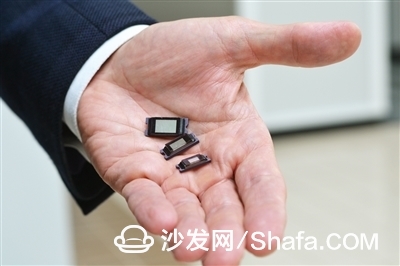But the situation is changing rapidly. With the development of mobile smart TVs, also known as "non-screen TVs," we are witnessing many changes from "impossible" to "possible."

From the bedroom to the conference room, to the backyard, and even beyond, these small, compact devices combine advanced projection displays with wireless connectivity to provide users with a truly portable, portable experience.
Current mobile smart TVs use state-of-the-art optics, a bright and durable LED light source, and an efficient TIDLP® PicoTM chip to produce an accurate, high-quality image on a wide variety of surfaces.

What is a mobile smart TV?
Imagine that simply placing a small electronic box on a table and letting it project upwards can turn any surface into a cinema screen. By pairing with a wireless connection, users can easily use the content obtained on the Internet for display viewing. Or send pictures to your mobile smart TV via your smartphone and project them to almost anywhere.
Based on energy-efficient DLP Pico chips, mobile smart TVs can deliver large, stunning images in non-traditional environments such as walls, walls, residential sides, and even ceilings. It can be said that as long as there are suitable lighting conditions, mobile smart TVs can break through the limitations of other display technologies.
One of the key areas driving the current mobile smart TV is the shorter throw ratio, which means that users can project a larger image within a shorter distance than traditional projectors. By placing a mobile smart TV in front of a wall just a few feet away from the display surface, we get high quality images of the same size as regular flat-panel TVs. Of course, the user can also adjust the image size according to different needs.
LED light source is another area of ​​technological development that determines the growth of mobile smart TVs. Manufacturers of mobile smart TVs use LEDs as light sources rather than light bulbs because of their large color gamut, smaller size, high brightness, higher energy efficiency, and relatively long lifespan. At present, we also see some manufacturers use lasers as light sources, but this is still at a relatively early stage.
Mobile Smart TV status
The development of mobile smart TVs is still in the "first half" stage - I think there are many worth looking forward to next. Some of the major needs and trends in this area are battery-powered ultra-small form factor products, and even these products do not look like a projector, but can magically make images appear anywhere.
Innovative manufacturers of mobile smart TV products include Nuts, LG, Philips and Extreme. Nut is the manufacturer of innovative projector P1 undefined1 is a full-featured device, its compact and compact cylindrical shape (245mm x 73mm) makes this device very easy to carry. It can project large images but it weighs only 1 kilogram and can run for hours with an internal battery. LG's PF1000U is an ultra-short-throw LED home theater projector that can display high-definition (HD) large-scale image video. The device uses the Android operating system to display content in streaming media through the application, and thus won the 2016 Consumer Electronics Show (CES) Innovation Award. The Philips Screeneo intelligent LED projector HDP1690/F7 is another very unique projector that features ultra-short projection, integrated speakers and a subwoofer. In addition, Kemi also introduced H1 products with built-in Hatman Kardon audio system and Full HD (HD) display features in 2016.
DLP technology advantages
It is no accident that DLP technology can be a key component of the wave of new wave of mobile smart TVs. Compared to other solutions, a DLP chip paired with an LED light source provides excellent efficacy in lumens per watt, contrast, and video reproduction.

With access to a wide range of design partners in a wide ecosystem, DLP products integrate an optical engine that makes it easier for system integrators to apply this product to their ready-to-launch mobile smart TV products. In addition, they also allow them to devote more energy to achieving more shocking and differentiated product features without worrying about the projection performance of their products.
With the constant pursuit of smaller, faster and brighter solutions, I believe the future of mobile smart TV is bright. For more technical details related to this exciting new technology, read TI's latest mobile smart TV white paper.
Smart TV/box information can focus on smart TV information network sofa butler (http://), China's influential TV box and smart TV website, providing information, communication, etc. on TV boxes, smart TVs, smart TV software, etc. Answering questions.Shenzhen Xcool Vapor Technology Co.,Ltd , http://www.xcoolvapor.com